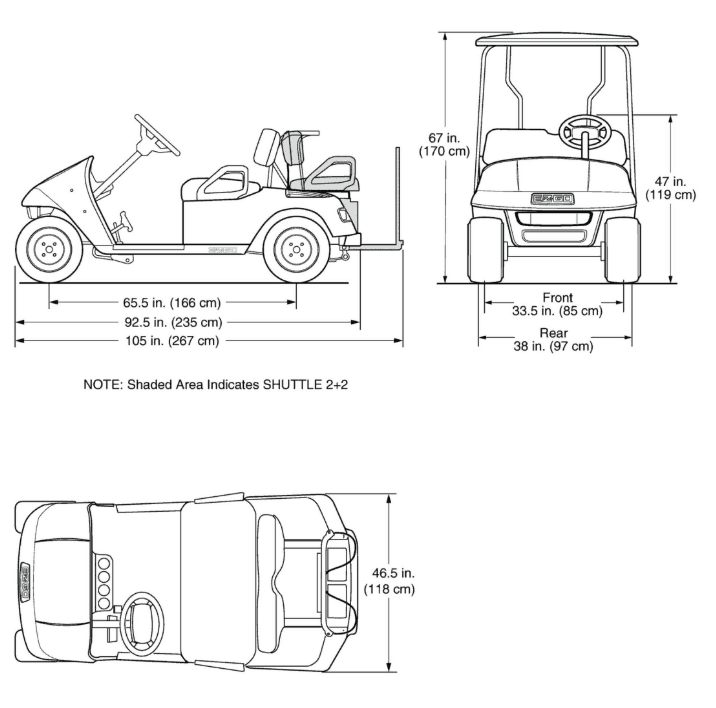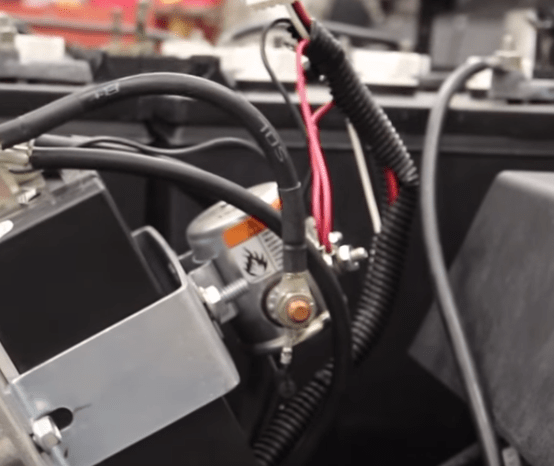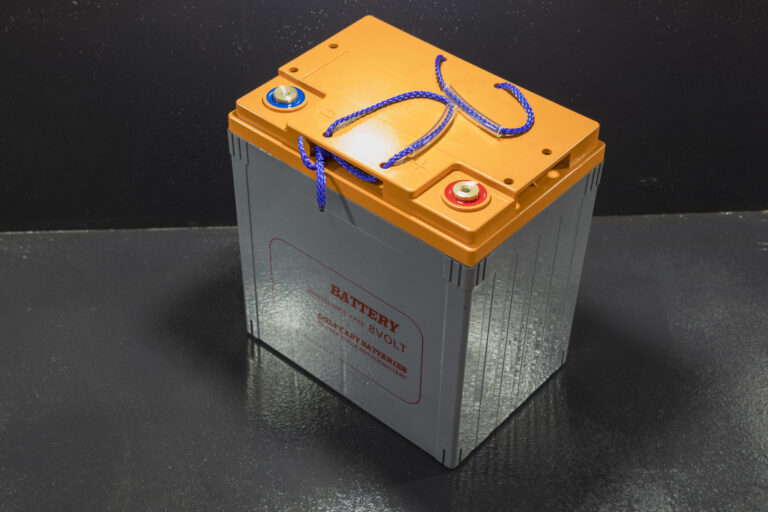Do Golf Carts Need License Plates? (Everything to Know)
Nothing beats owning a golf cart. whether in your neighborhood or, even better, living near a good golf course allows people to dream of “screaming down the highway” in their golf cart on the way to a great game of golf.
But while on the road, is your cart legal? Do golf carts need license plates the same as a car?
As a general rule, most states that permit street-legal golf carts have legislated that the owners of golf carts ensure their cart has an adequately displayed and valid license plate. Authorities class golf carts as slow-moving vehicles and limit them to 35 mph zones or not. They are not allowed on public roads at all.
States fall into one of two categories: those that permit local governments to allow certain classes of golf carts to use public roads and those that do not… as with most things, it depends.
So, what should you consider before taking your golf cart onto the open road? Let’s dive in!
Do You Need a License Plate for a Golf Cart in Florida?
No. It’s a bit of a Wild West regarding golf cart license plates. Only about two dozen states–fewer than half the US states–permit a road-legal cart for street use.
Since states further devolve whether to allow golf cart operation onto public roads to local governments, even where the state is permissive of road-ready golf carts, any given local authority might beg to differ.
Much depends on the nature and condition of public roads in the local area and the demography of the region’s population. For example, with its higher density of golf-playing seniors, Florida is very friendly to the typical golf cart (including a converted golf cart).
As one might expect, Floridians face few problems–if any–navigating from their residence to a nearby golf course.
On the other hand, in Hubbard, Ohio, residents seem to have fallen out of love with road-going golf carts and now consider them a nuisance and a menace.
As a result, Hubbard City Council is taking steps to remedy the situation by promulgating an outright ban, removing the legality of road-going golf carts altogether.

of Callaway ERC Triple
Track Golf Balls for
yourself or your buddy!
What are The Road-Legal Golf Cart Requirements?
Not all golf carts are created equal. Even where local authorities are happy to allow golf carts onto public roads, several restrictions still apply, with having a license plate being only one of them.

Speed Restrictions for Golf Carts on Public Roads
Non-compliant golf carts
Muti-generational family golf carts for grandparents, self, and kids are the slowest class of carts for obvious reasons and generally achieve a top speed of between 12 and 14 mph.
Golf course golf carts, being slightly more suitable for a presumably more homogeneously adult clientele, typically travel at a top speed of around 15 mph. (It helps to get the patrons around the golf course a little more quickly, allowing the course operator to fit in more players. It all mounts up in the end.)
Compliant golf carts
People who are lucky enough to have the money to spare, live within two miles of driving distance to a golf course and are able to afford to purchase a top-tier golf cart that can achieve regulation-compliant top speeds in the 20-25 mph range.
Interestingly, speed restrictions for golf carts on public roads don’t restrict the upper limit of golf carts but their lower limit.
This makes sense because states nationally limit all golf carts to a maximum of 25 mph, classifying them as “slow-moving vehicles.”
There are several types of slow-moving vehicles, such as ROVs (Recreational Off-highway Vehicles), ATVs (All Terrain Vehicles), and UVs (Utility Vehicles).
Many of these slow-moving vehicles are entitled to use public roads as long as they don’t venture onto highways, which they are all prohibited from using.
All states restrict slow-moving vehicles to driving in 35 mph zones only.
To be legal on a public road, here is a list of features every golf cart must have:
| A slow-moving vehicle emblem is prominently displayed at the back of the cart |
| Headlamps |
| License plate |
| Mirrors |
| Reflectors |
| Tail lamps |
| Maximum max speed of 25 mph, or minimum max speed of 20 mph |
Road-legal Golf Carts Must Obey these Three Rules
- Beaches: private or public, only when expressly permitted by local ordinance.
- Intersections: only where corners lie inside 35 mph zones in all directions
- Roads: only in 35 mph zones and never farther than two miles between the parking location and the destination golf course.
I’m unconvinced that po-po can or will nail you for driving between parking and a golf course exceeding two miles apart, but, as they say, better safe than sorry.
Frequently Asked Questions (FAQs)
How do you put a license plate on a golf cart?
Although golf cart license plates have four marks resembling mounting holes (added by manufacturers for “realism”), most golf carts do not have plate frames and license plates cannot be securely mounted with nuts and bolts.
Instead, install your golf cart license plate using velcro strips, which the platemaker will ship with your license plate.
If you wish to use nuts and bolts, tell the golf cart manufacturer before purchasing one, and they will drill suitable mounting holes for you.
How Many MPH Does a Golf Cart Go?
A golf cart’s MPH ranges from 12 to 20 miles per hour. In addition to that, most golf carts have a horsepower of 10 to 15 cc. If you want to improve its MPH to up to 30, you can modify your golf cart with the help of experts.
Is Driving My Golf Cart Okay on the Sidewalk?
It depends. Some local authorities frown on this with a certain degree of testiness that might result in some legal unpleasantries, while others are pleased to accommodate golfers to the ire and possible bodily harm of sundry pedestrians.
As policies vary from place to place, you must check local municipal rules and regulations.
What Size License Plate goes on a Golf Cart?
The stipulated standard for golf cart license plates is 4.25 ins by 8.5 ins. Some plate makers, especially those in the customization business, vary plate size by offering slightly smaller license plates of 4 ins by seven ins.
Those intending to customize their license plate should buy from an in-state license platemaker, or at the very least, double-check to confirm that the containers they intend to buy meet local legal size requirements.


and apparel.
gear, accessories and apparel. (affiliate link)
In Conclusion
All authorized road-legal vehicles, including slow-moving cars, require a license plate for identification purposes by law enforcement.
And just for safety’s sake, ensure the operator has a valid driver’s license. It’s unnecessary, as you can operate a golf cart at a younger age.
Golf carts are classed as slow-moving vehicles, so–as long as they abide by all regulations and stipulations that make them road-legal–where the state and local authorities grant permission, they can also take to public roads.







